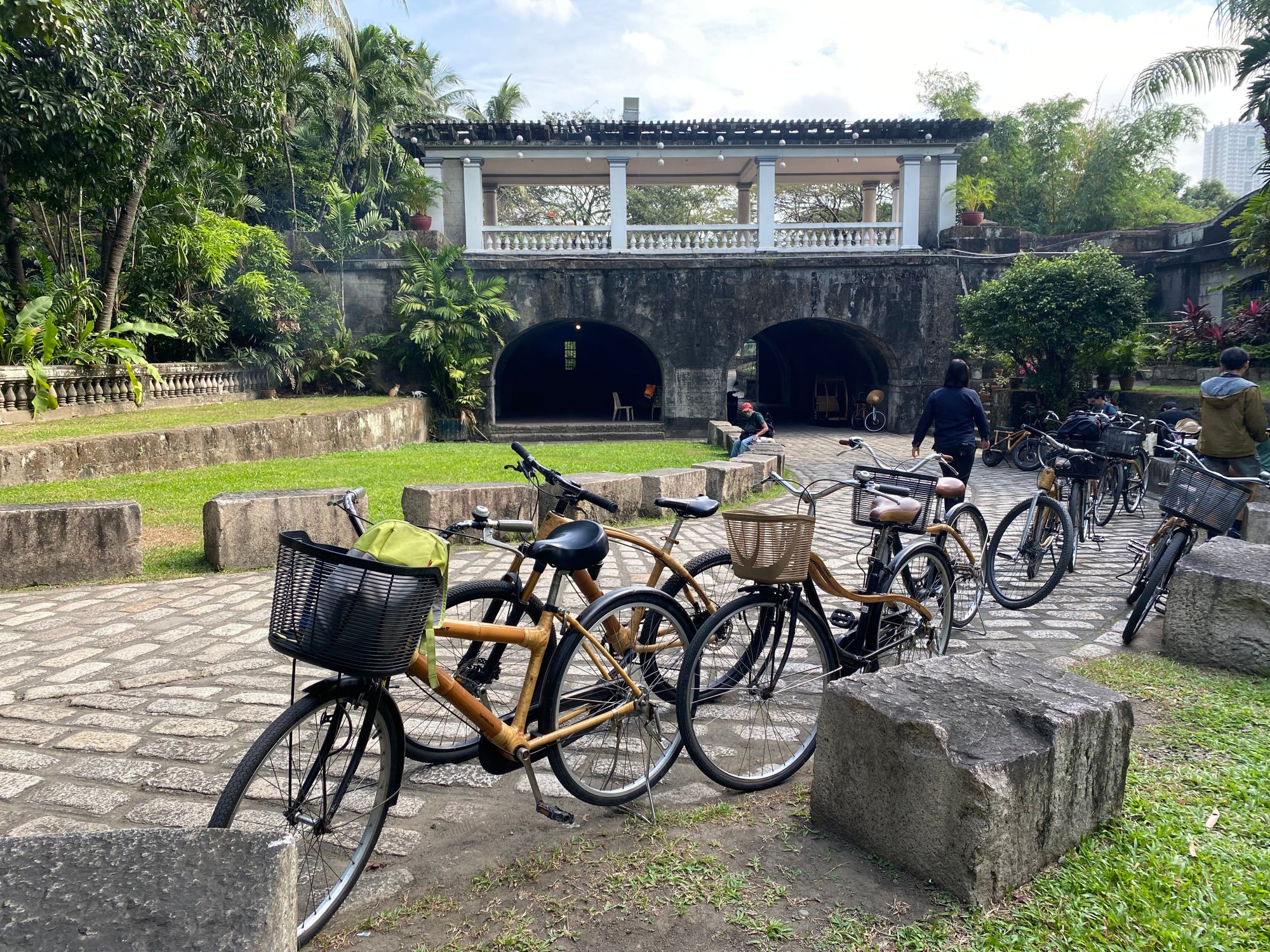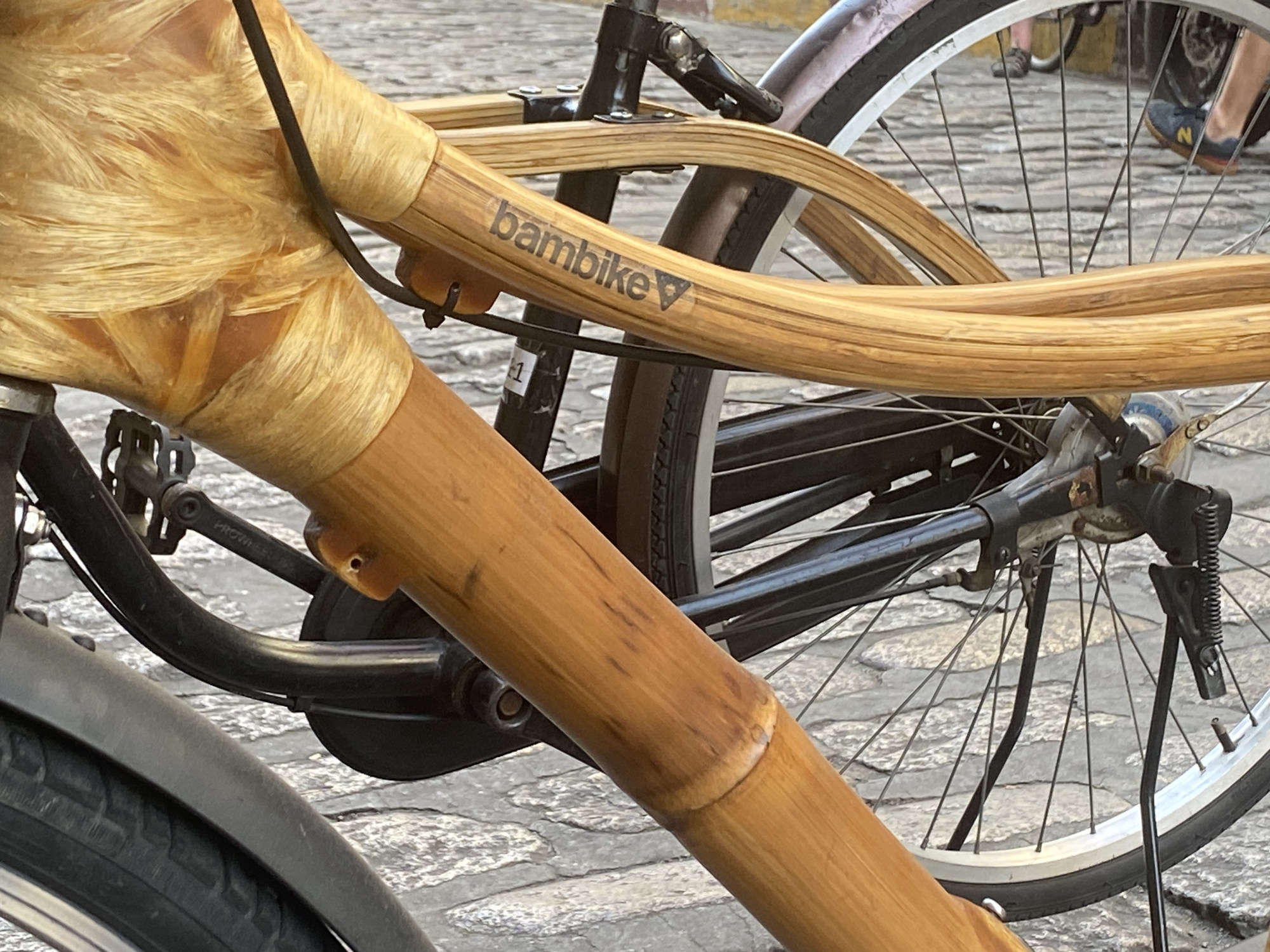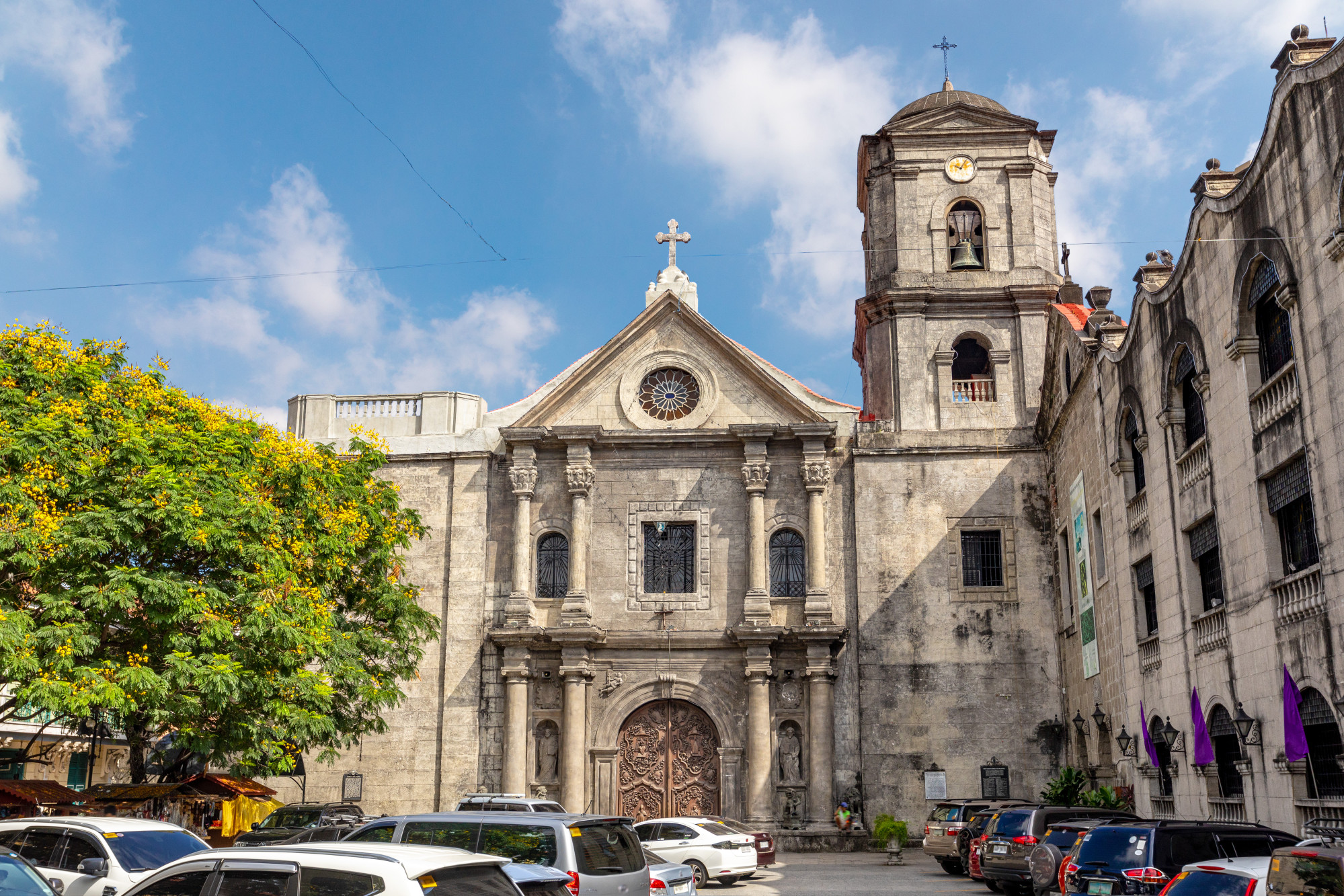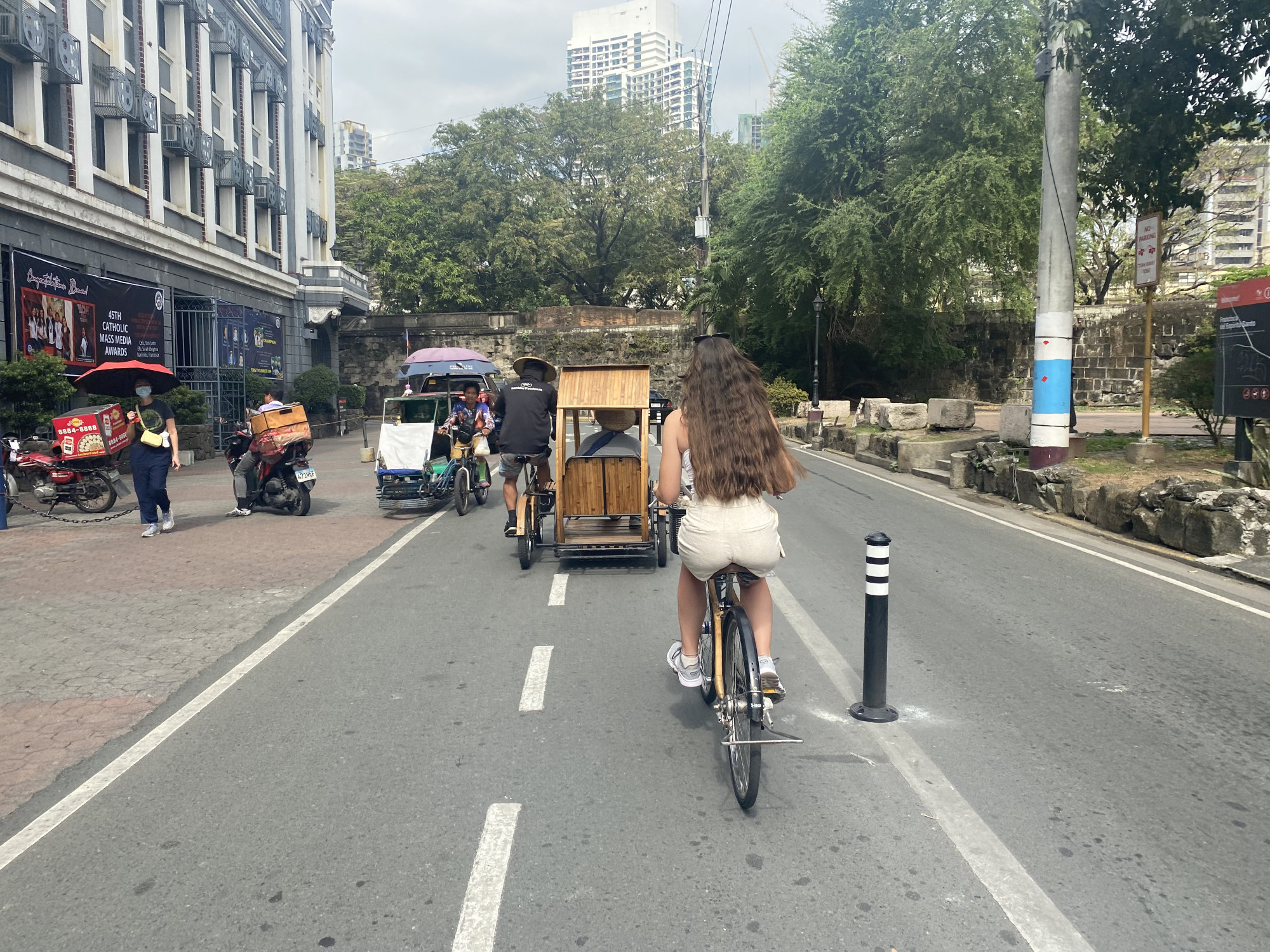
Churches, gardens, dungeons – a cycling tour of Intramuros, Manila, is a ride through Philippine history
- Manila’s growing army of cyclists can now use their bikes to explore historic Intramuros, where a network of bicycle lanes is a hit with fans of pedal power
- Bambike runs guided tours of the ‘Walled City’, Manila’s oldest neighbourhood; riders zip down cobbled streets to leafy plazas and past churches and dungeons
Manila does not look like a city designed for cyclists.
But in Pasay, on the city’s seafront, rows of bicycle stands can be found outside the enormous SM Mall Of Asia.
BGC (Bonifacio Global City), a central business district that has some of the city’s swankiest hotels, has fewer bicycle lanes than Pasay but no shortage of cyclists. At One Bonifacio High Street, a leafy pedestrianised plaza filled with colourful art installations, there are rows of guitar-shaped stands next to a machine that allows cyclists to secure their bikes for a few pesos.

Surprisingly, however, it is the city’s oldest neighbourhoods that have embraced cyclists with the most enthusiasm.

Bambike offers guided cycling tours of Intramuros, but the mission of the company – founded by Filipino-American Bryan McClelland – is not just to convince more people to saddle up. Its bikes are vehicles of change in other ways, too.
Another material used in their manufacture is abacá, a fibrous plant recently described by the Philippine Department of Science and Technology as the strongest natural fibre in the world.

“I’ve broken so many bones, but I’ve never broken a Bambike,” says Steven, the Bambike guide for my pedal-powered exploration of Intramuros.
Such tours are important when it comes to raising awareness of cycling and its benefits in a city wreathed in pollution, he says.
“There are now bike paths in other areas beyond Intramuros, such as Makati. There’s still a long way to go, but there’s definitely progress, and we believe our bike tours can help because they mean locals get used to seeing cyclists.”

Choosing Intramuros as the location for the city’s first organised bike tour was a no-brainer, not least because much of the route shadows the ancient city walls, built to protect Fort Santiago, a citadel established by the Spanish in the late 1500s.
Intramuros’ cycling lanes are smooth, wide and clearly signposted. The numerous city gates carved into the stone fortifications provide plenty of opportunities for a pause.
Our starting point is Bambike’s office in the centre of Intramuros, and after arriving early, I spend a few minutes exploring cobbled streets that lead to leafy plazas, hidden courtyards and town houses dating back to the Spanish colonial period.
The Unesco-listed San Agustin Church has beautifully painted ceiling frescoes and enormous chandeliers. Its most spectacular artefact is the enormous Bell of the Most Sweet Name of Jesus, which was installed in the mid-1800s. In 1880, the 3,400kg (3.35 ton) bell was badly damaged during an earthquake, and now rests on the floor near the entrance to the church.

Earthquakes are not the only disasters to have wreaked havoc on Manila. During the second world war, more than half of the city was destroyed. Proof of the government’s determination to preserve Intramuros’ architectural style can be found in the Plaza San Luis Complex, where I find nine town houses that were built after the second world war in late 1800s Spanish style.
It is time to saddle up, and our first stop is Revellin Real de Bagumbayan, fortifications constructed in the 1700s to protect the Puerto Real, at the time one of the city’s most important gateways.
Beyond the thick stone walls are a series of beautiful sunken gardens, one of which is being used for an open-air dance class. Families picnic on the grass and it is easy to forget that one of Southeast Asia’s largest cities lies just beyond the crumbling walls.

We hop back on our bikes, and pedal past bright yellow signs reminding drivers to keep an eye out for cyclists and along wide lanes onto which silhouettes of bikes have been painted. Every so often, we are passed by a group of fellow cyclists or a Lycra-clad speed machine on a sprint around the city.
We reach the Puerta del Parian, a gateway built in the late 1500s and named after the nearby Parián de Arroceros – a Chinese rice market.
This section was reinforced in the early 1600s after uprisings by Manila’s Chinese community, who were persecuted by the Spanish. The European colonisers feared being outnumbered by the Chinese and introduced measures to restrict their trading activities.
There is a sense that the Philippines cannot quite decide who played the most important role in its development. We cycle past a statue of Spanish king Charles IV (1748-1819).
It was erected in the early 1800s as a sign of gratitude for the king’s decision to send huge shipments of the smallpox vaccine to the Philippines, but in 1961 was replaced by a statue of three Filipino war heroes. In 1981, Charles IV’s statue was restored to pride of place.

He was executed and for many, his death represented the birth of a new nation, his writings and fate fuelling the fight for independence from colonial rule.
The lichen-covered, roofless ruin of the cell in which he spent his final days stands just a few metres away. He was kept apart from other prisoners, and his surprisingly spacious cell was once the fort barracks’ pantry.
Inside, there is another statue, of a bowler-hat-wearing Rizal clutching the notebook in which he wrote his final words – a poem known as Mi Ultimo Adiós (“My Last Farewell”).
Nearby is the Last Walk to Martyrdom Trail – shoeprint-shaped markers set into the ground to represent Rizal’s final journey: to the execution site, where sculptures depict him and his executioners. The diorama reflects Rizal’s final act of defiance – moments before the soldiers fired, he turned his back on them.

The final stop on our tour is another site closely connected with Manila’s darkest times – Fort Santiago’s dungeons. In February 1945, as allied forces were trying to liberate the city, the Japanese occupiers embarked on a murderous rampage – the Manila Massacre – during which much of the city was destroyed in less than a month.
Estimates of the death toll range between 100,000 and 240,000. American soldiers found thousands of civilians imprisoned in these dark, dank dungeons, and the corpses of 600 who had died.
The walls of the claustrophobic tangle of subterranean cells are covered with faded photographs showing the horrors that greeted the liberating Americans. There is hardly any natural light and the thick stone walls and roof muffle sounds from the park beyond and trap the warm, musty air.

We finish our tour on the banks of the Pasig river. Steven tells us that until the 1900s, the river was teeming with crocodiles. Its murky waters are now heavily polluted, although in recent years the Manila Boat Club has offered rowing lessons on the river.
I remind myself that five years ago, I would have balked at the thought of saddling up in this congested city, so who knows? Perhaps my next visit will be paddle-powered, not pedal-powered.

